How to Safely Socialize (and Work) at Home During the Pandemic
Tips for transforming your backyard area into a social distancing hang out, as well as creating a work-from-home haven.
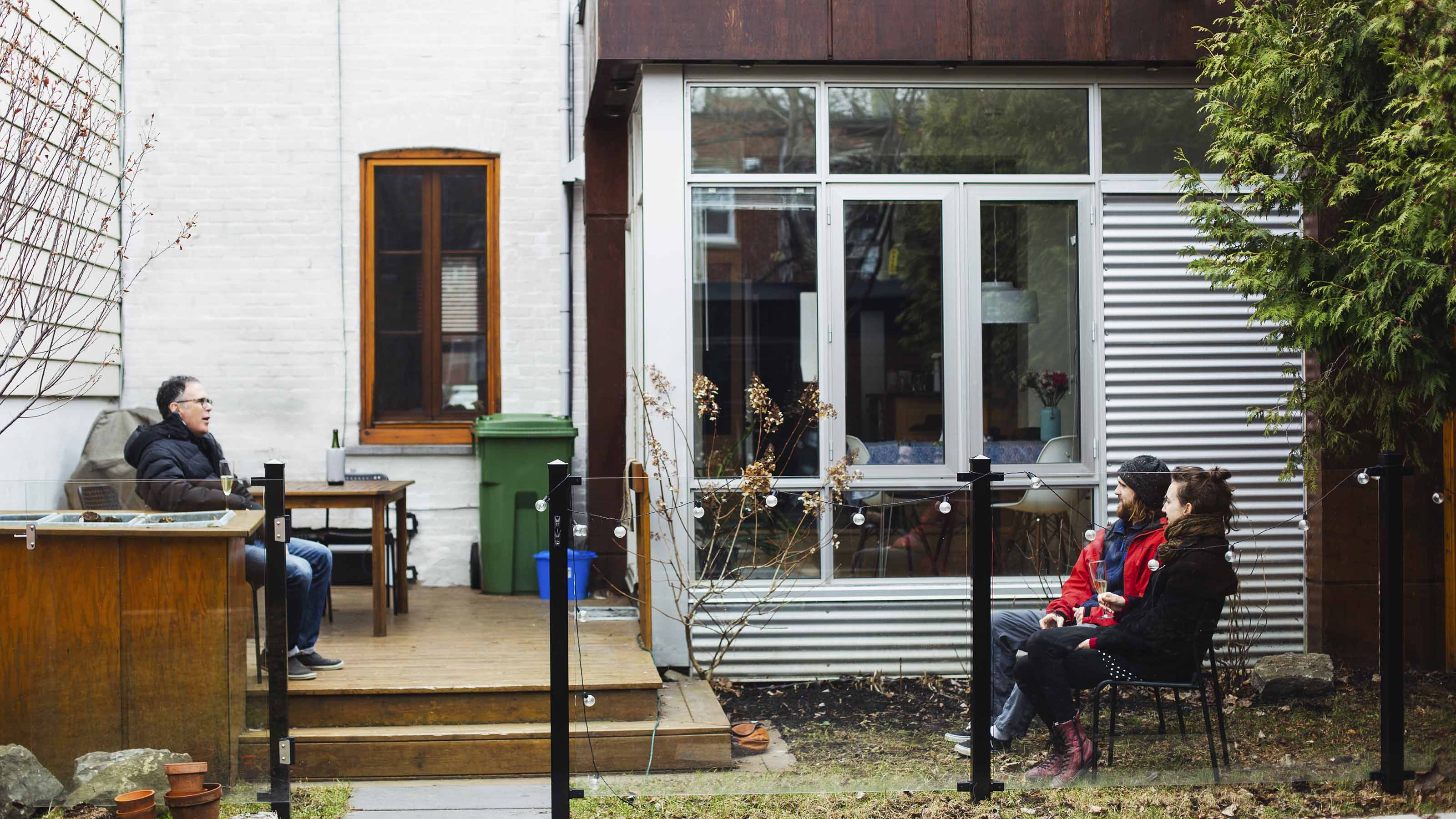
Being with family and friends during COVID was easier last spring and summer, when you were able to feel reasonably safe gathering outdoors at sidewalk cafés and restaurants, picnic areas, and porches and patios. Now, with the pandemic still raging and winter weather arriving, options for lingering outdoors in most parts of the U.S. have diminished.
But with the right furniture, equipment and gear, you can transform your backyard into an inviting space to socialize and still stay warm. Here’s where to start.
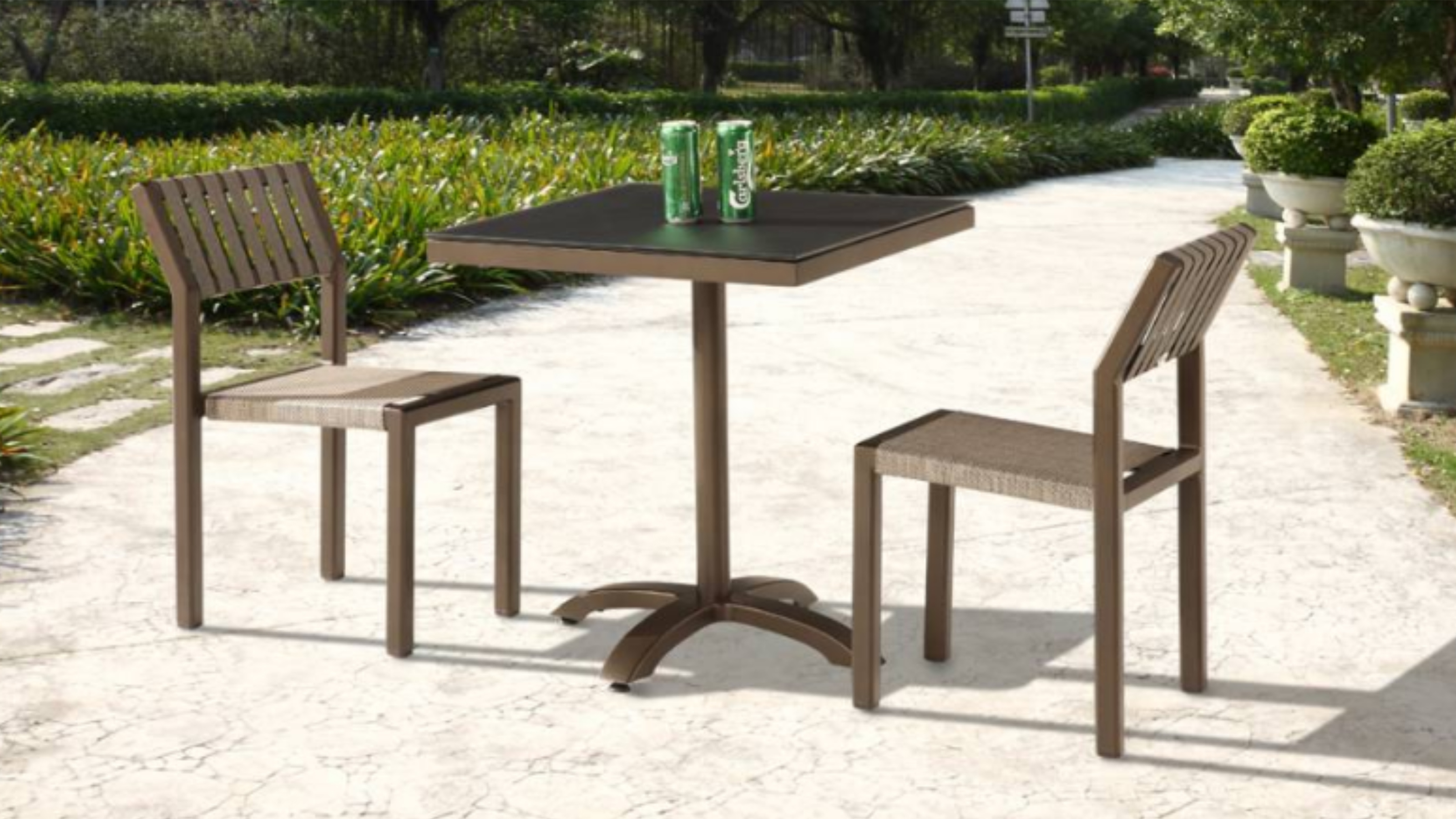
Create a Welcoming and Safe Space
To turn your patio or backyard into a space that’s perfect for entertaining, start with seating. Keeping social distancing top of mind, you’ll want to create multiple seating groups using bistro-style tables that seat up to four guests, says Kesha Franklin, CEO and principal interior designer for Halden Interiors, a design firm based in Green Brook, N.J. Because this furniture will be used outdoors, invest in pieces made from quality materials that are weather-resistant (think aluminum, teak or wrought iron).
If you’ve got some cash to spend, Franklin recommends shopping for bistro dining sets from outdoor furniture manufacturer Babmar. Its Amber Armless Dining Set ($1,185) seats two and is constructed from powder-coated aluminum, teak and tempered glass. If your budget is more modest, Better Homes and Gardens’ Clayton Court 5-Piece Patio Dining Set ($450 from Walmart.com) is a top pick among reviewers at The New York Times’ product-review site Wirecutter. The set, which comes with a table and four chairs, is made from steel and has cushioned seats. It garnered praise for comfort and being low-maintenance.
A protective cover will help keep your furniture in pristine condition. Amazon has a variety of options starting at $20 (search products using the phrase waterproof bistro set cover). If you decide on furniture with removable cushions, consider buying an outdoor storage unit that seals shut. These types of containers help keep mildew at bay by preventing moisture from accumulating. You can find a wide selection at Home Depot and Lowe’s, starting at as little as $39.
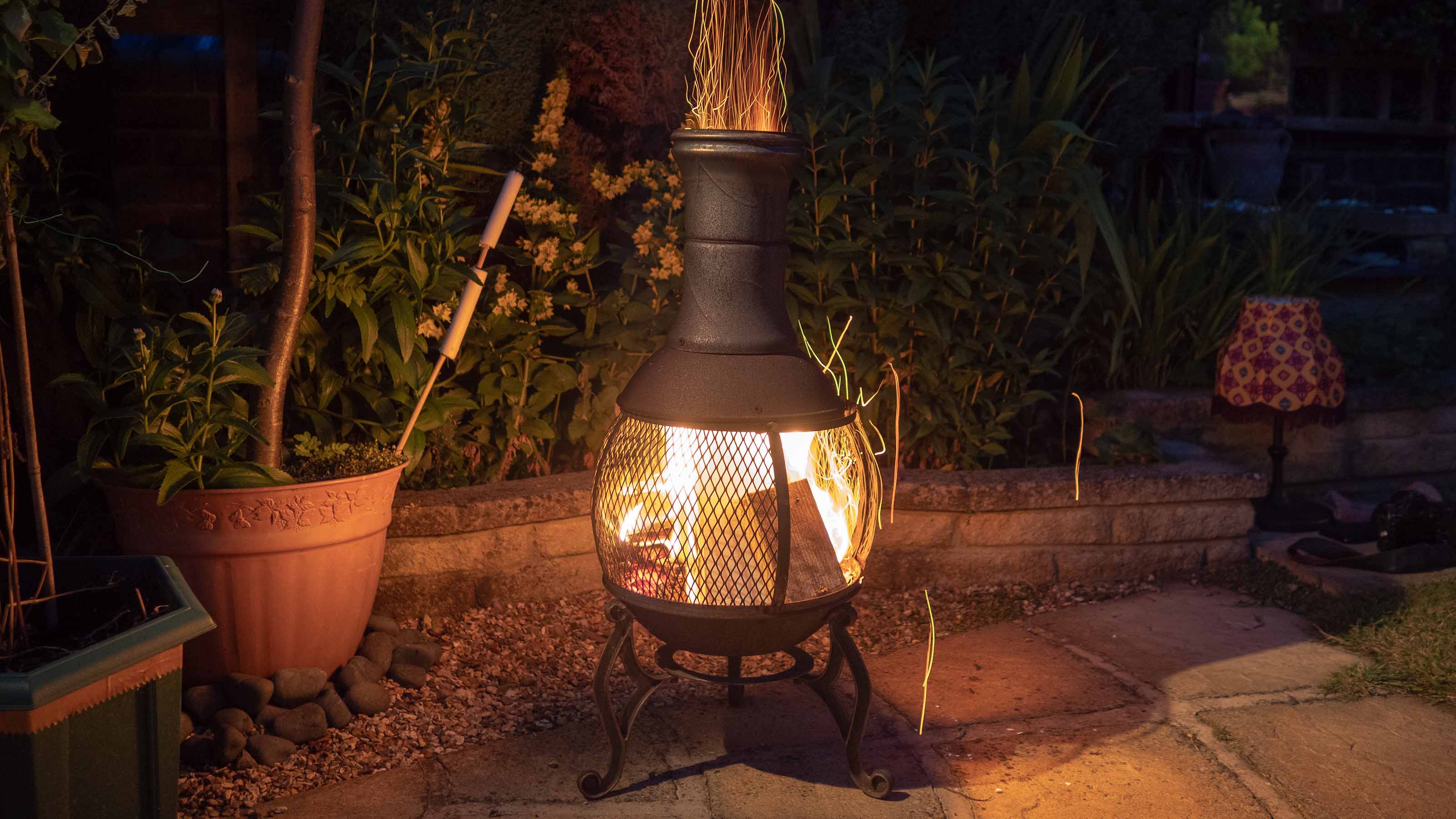
Keep Your Guests Warm and Cozy
For several hundred dollars, you can create a cozy gathering spot and experience the warm glow of a flame with a portable fire pit. If you’d like a permanent installation, the price quickly climbs: Custom-built masonry wood-burning fire pits start at about $1,500 to $2,000; gas-fueled fire pits cost even more. Prefab outdoor fireplaces start at about $1,600; custom-built models are in the $5,000-to-$10,000 range.
A popular choice for outdoor heating (and, in some cases, outdoor cooking) is a chiminea (the name comes from the Spanish word for chimney). A chiminea is typically a wood-burning, free-standing, front-loading fireplace or oven with a bulbous body and a vertical smoke vent or chimney. Chimineas range in price from as low as $80 up to $600 or more. Although the popularity of chimineas has made them somewhat hard to find in hardware and home furnishing stores, many are available online. One option is the cast iron chiminea by Kay Home Products, which sells for about $200 on Amazon. If you choose a cast aluminum model, you won’t have to worry about rust. Blue Rooster cast aluminum chimineas are available in a variety of designs for about $600 on Amazon; with some models, you can also fire up a pizza on a small grill.
But chimineas and other wood-burning heat sources create smoke and ash, and they can pose a fire hazard. Infrared heat, like the kind produced by an electric patio heater, is cleaner and more efficient, and it offers a safer alternative if you live in a fire-prone locale. “Since infrared heat is transferred directly to a person or object, the warmth created won’t get carried away by the wind, making it the most efficient way to heat an outdoor space,” says Jeremy Kline, of Woodland Direct, a large e-commerce company specializing in fireplaces, wood stoves and outdoor living products.
Patio heaters can be free-standing or mounted to, say, a wall or post, and they come in propane, natural gas and electric models. Although gas heaters may not keep you as warm as the best electric models, they are a relatively low-cost, energy-efficient way to heat your outdoor space. Propane is slightly more expensive than natural gas, but it is also slightly more efficient and cleaner burning. One highly rated, propane-fueled patio heater is the XtremepowerUS 48,000 BTU Premium Floor Standing Propane Gas Patio Heater (about $170).
Top outdoor electric heaters, such as the 6,000-Watt Infrared Dual-Element Heater by Infratech, run about $800. They produce more concentrated heat than almost any other heating fixture. Some electric heaters can plug into a standard 120-volt wall socket, but most require higher voltage (and produce a greater amount of heat). For a 6,000-watt heater, for example, you’ll want a 240-volt outlet.
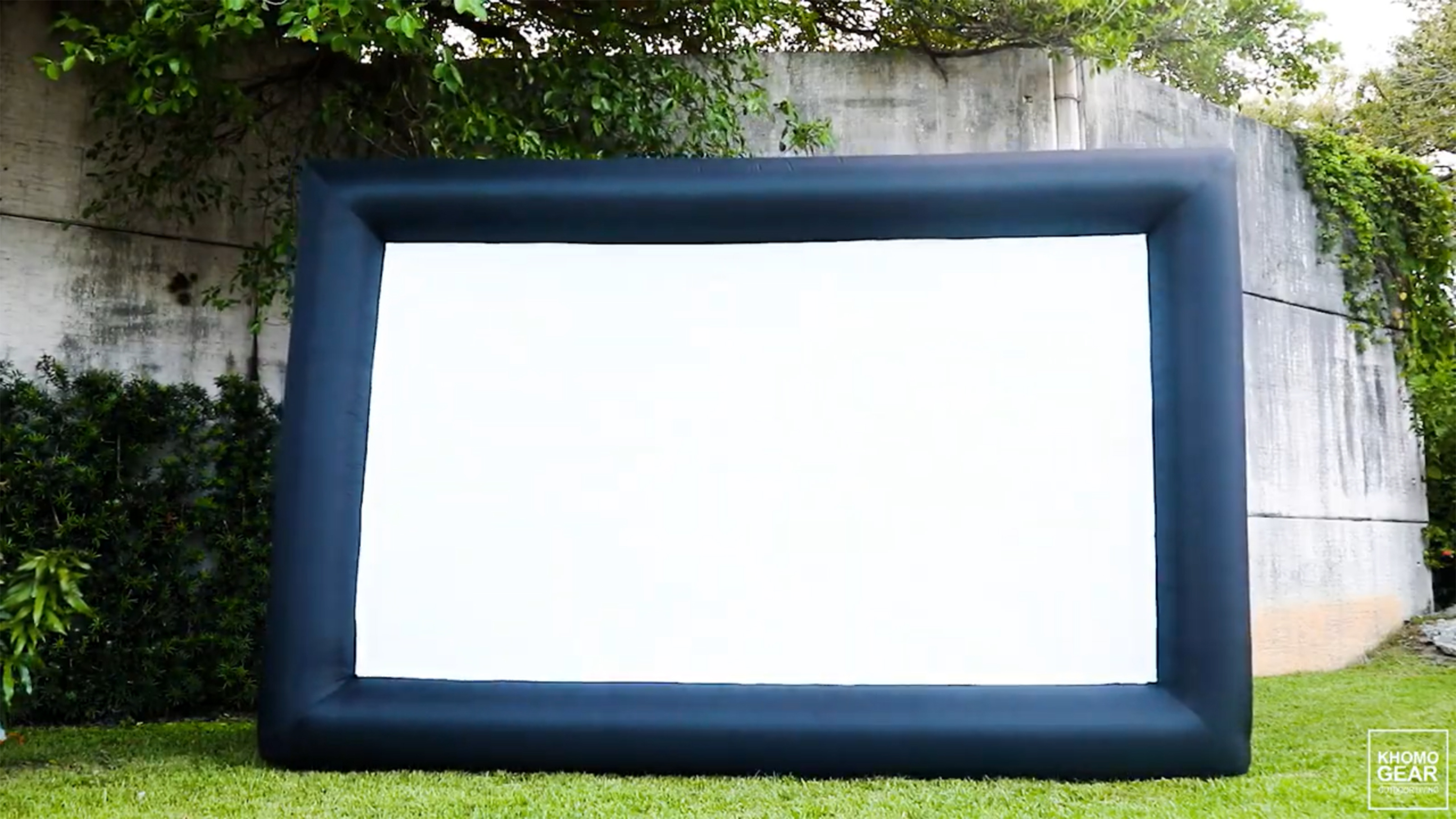
Liven Things Up With Some Entertainment
Nothing sets the mood better at a holiday-themed gathering than a great playlist. Make sure your sound system is up to the task and carries well in an open space. If it’s time for an upgrade, Halden Interior's Franklin recommends the AcoustaLandscape AS4.1 Outdoor Subwoofer With Four Satellite Speakers ($1,899 at Crutchfield.com), which comes with a limited three-year warranty. That price tag may seem steep, but if you plan to entertain guests outdoors throughout the winter and beyond, it’s well worth it.
Up the fun factor with an outdoor movie night. You can snag a mini home theater projector for a fraction of the cost of a full-size model. One that’s worth a look is the LG CineBeam LED Projector PH550 ($500 at LG.com). It’s a Consumer Reports top pick thanks to its portability and picture quality. You’ll also need a projector screen, and Franklin offers up a fun option: Khomo Gear’s 20-Foot Inflatable Screen Projector ($230, KhomoGear.com).
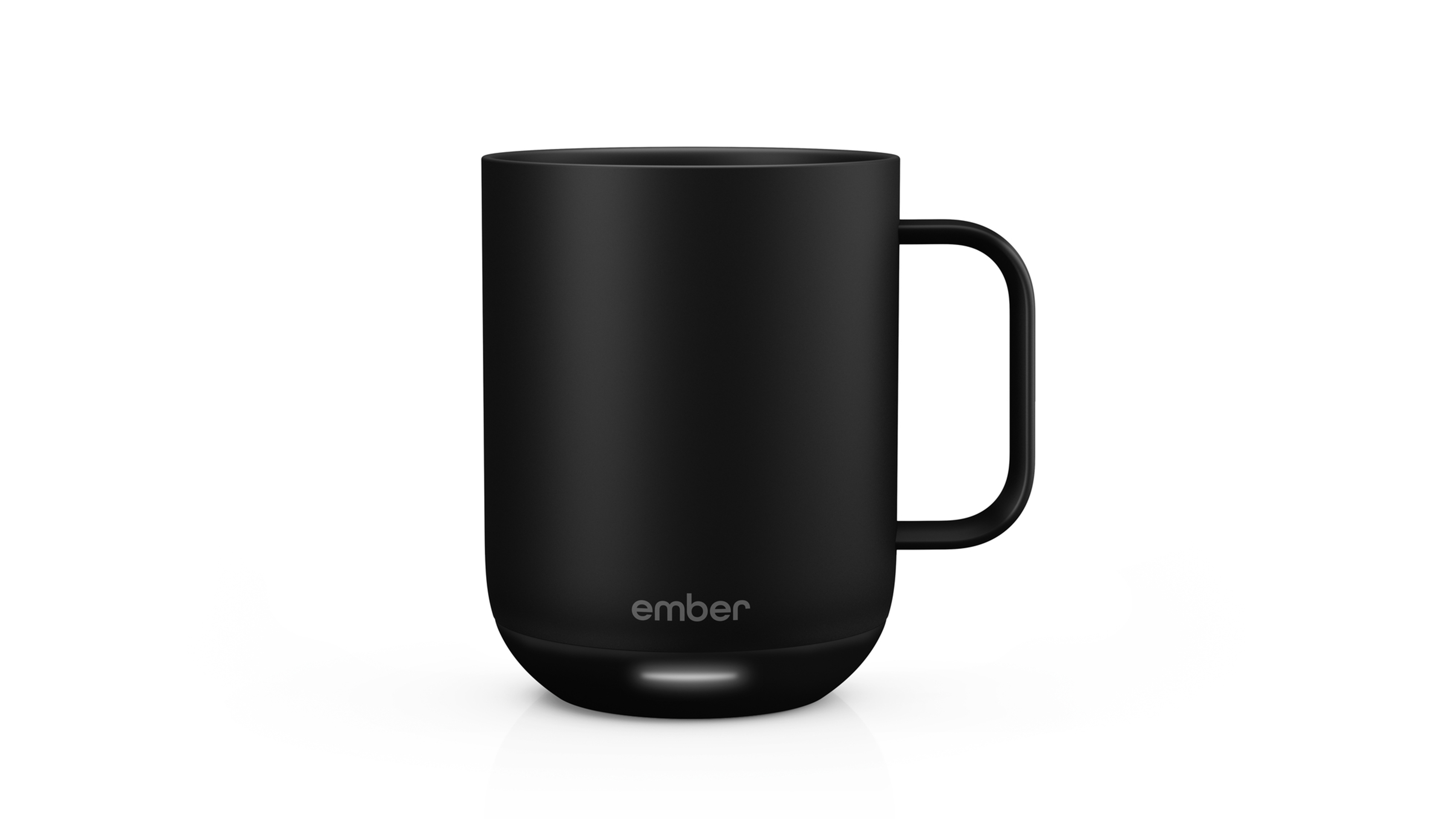
Keep the Drinks Hot
You can’t entertain without serving drinks, and you need to make sure your coffee, tea or perhaps slightly stronger hot beverage doesn’t turn ice cold while you’re enjoying the evening. Consider investing in a catering urn. For example, SamStores.com has a 5-liter stainless steel urn that’s perfect for keeping apple cider or mulled wine warm. The urn can also be used to boil water if you want to steep tea or make pour-over coffee instead. Cost: $207. If that’s a budget buster, you can order a 44-ounce glass carafe with a metal warmer on Amazon.com for less than $50. It uses a tea candle or tealight that sits in the base.
For smaller gatherings, start small with a camp-worthy coffee thermos or cordless mug warmers from sites such as Amazon.com and Wayfair.com. Or consider a 10- or 14-ounce Ember Mug, which is temperature controlled through an app. It also comes with a recharging coaster. Prices start at $99.95.
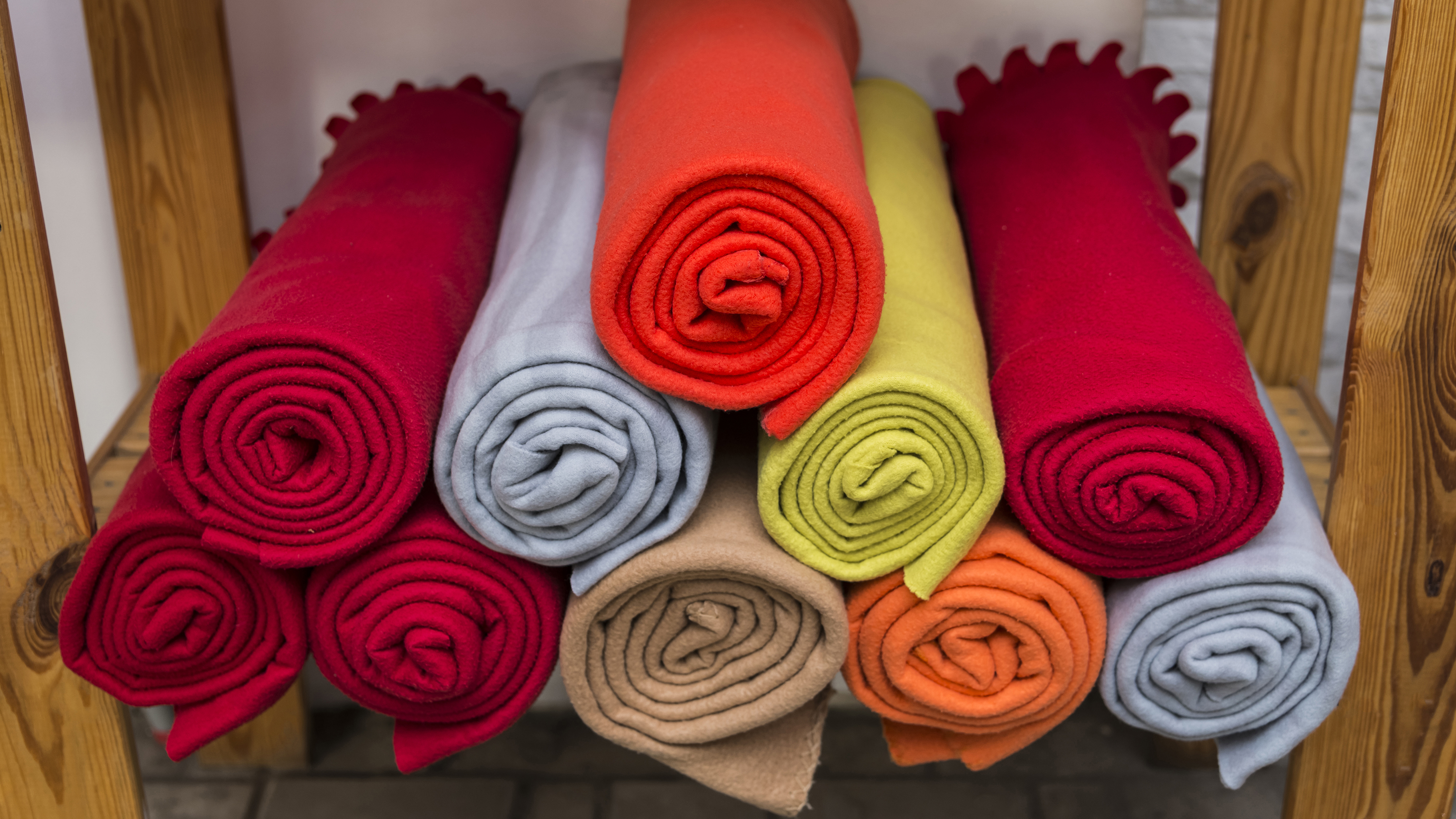
Warm Up Your Extremities
To entertain outside this winter—even with an outdoor heat source—you’re going to need some layering basics (the proverbial long johns, wool sweaters and down vests or jackets), plus gear to keep your fingers, toes and head completely warm. Check out camping stores such as REI.com or L.L. Bean. For example, Swedish clothing maker Fjallavren is one of REI’s favorite brands for winter outdoor clothing.
For cold nights around the chiminea or fire pit, take a cue from horse-drawn-sleigh passengers of old and pile on the blankets, but with a modern twist: If your outdoor space has electrical outlets, you can buy electric blankets. Or skip the cord and consider splurging on the battery-operated Cozee Heated Blanket ($250 on Amazon.com). Charge the battery pack ahead of your winter soirée, and the heat will last approximately six hours. A more affordable option is the Serta Microfleece Battery-Powered Electric Throw Blanket ($69.95 at Walmart.com). Both blankets are machine washable.
Next, keep your fingers extra toasty with reusable hand warmers. HotSnapz Reusable Hand Warmers produce heat after you snap a tab inside a gel packet. After your guests leave, just boil the used packets for 10 to 15 minutes and they are ready for reuse. You can find an eight-pack set on Amazon.com for about $20. Or you can pass around disposable hand and toe warmers from brands such as HotHands. They may come with adhesive for you to stick inside of your coat or on your sock.
A flannel or Sherpa (faux fur) face mask can help protect your face from the cold. Or try a fleece neck gaiter; Etsy seller Boutique Fitkado has one that comes in five colors and has filter pockets. You can get one with 10 filters as an add-on for roughly $20, plus shipping.
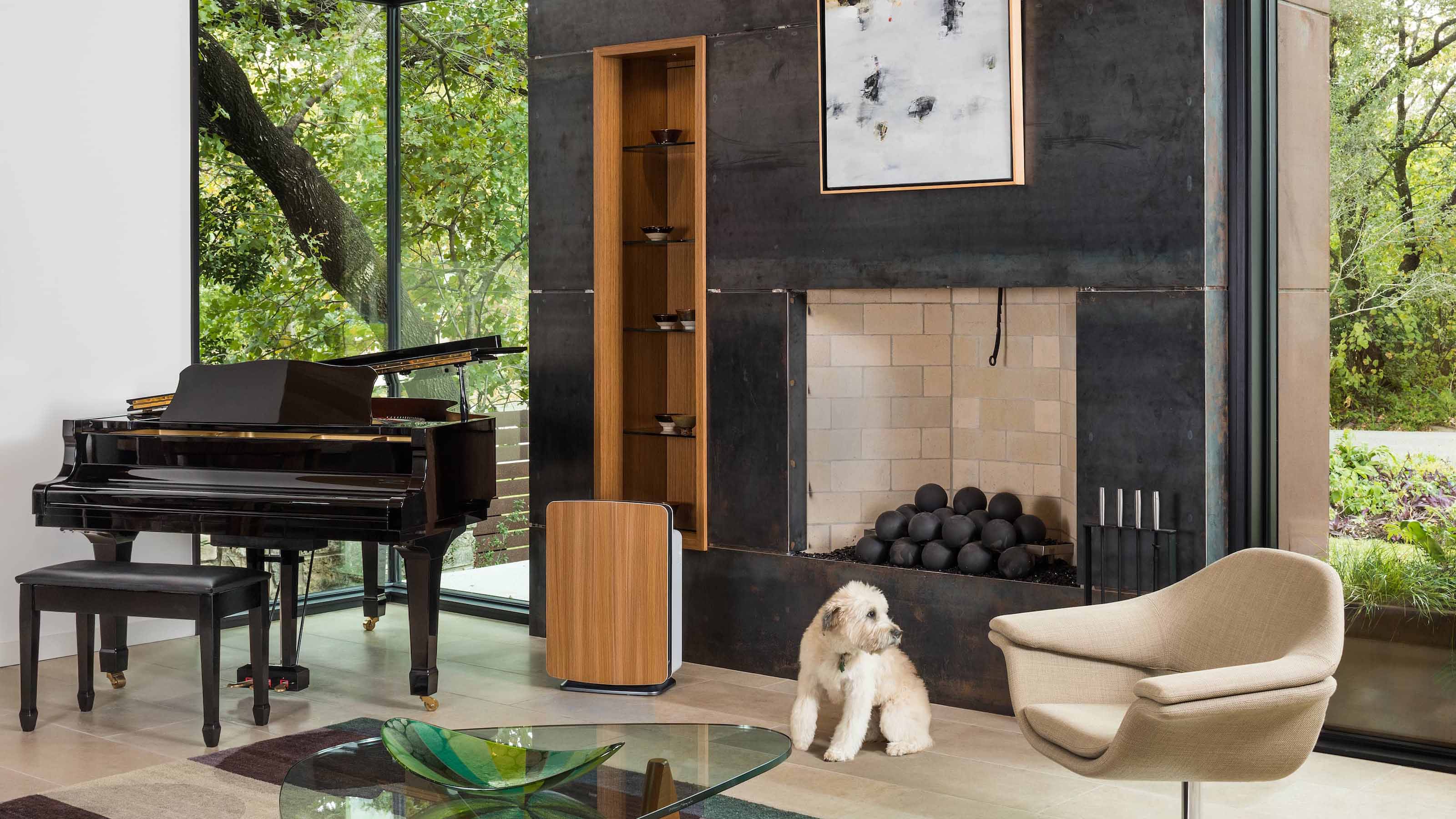
Home Tech Items to Help Keep COVID at Bay When Inside
You can take preventive measures to make your home more COVID-resistant. In its advice on cleaning and disinfecting homes during the pandemic, the Centers for Disease Control and Prevention states: “When used properly, air purifiers can help reduce airborne contaminants, including viruses, in a home or confined space.”
A HEPA filter will likely capture the droplets released by someone with COVID. HEPA stands for high-efficiency particulate air, and a HEPA filter can efficiently filter particles in the air as small as 0.01 microns, according to a NASA study on HEPA filtration. The Alen BreatheSmart Classic Air Purifier ($649) is the most highly rated HEPA model by Consumer Reports. Wirecutter’s top pick is the Coway Mighty ($188 from Amazon and Walmart), which it calls “effective, efficient and inexpensive.”
If someone in your pod tests positive for COVID (or has been exposed to someone who tests positive) and has to quarantine, technology provides a safe way to communicate. The new Apple HomePod, a voice-controlled speaker starting at $99, lets you set up an intercom system between speakers and Apple devices in your home. You can even assign each HomePod to a room or zone, then send intercom messages to just those rooms or zones in your home.
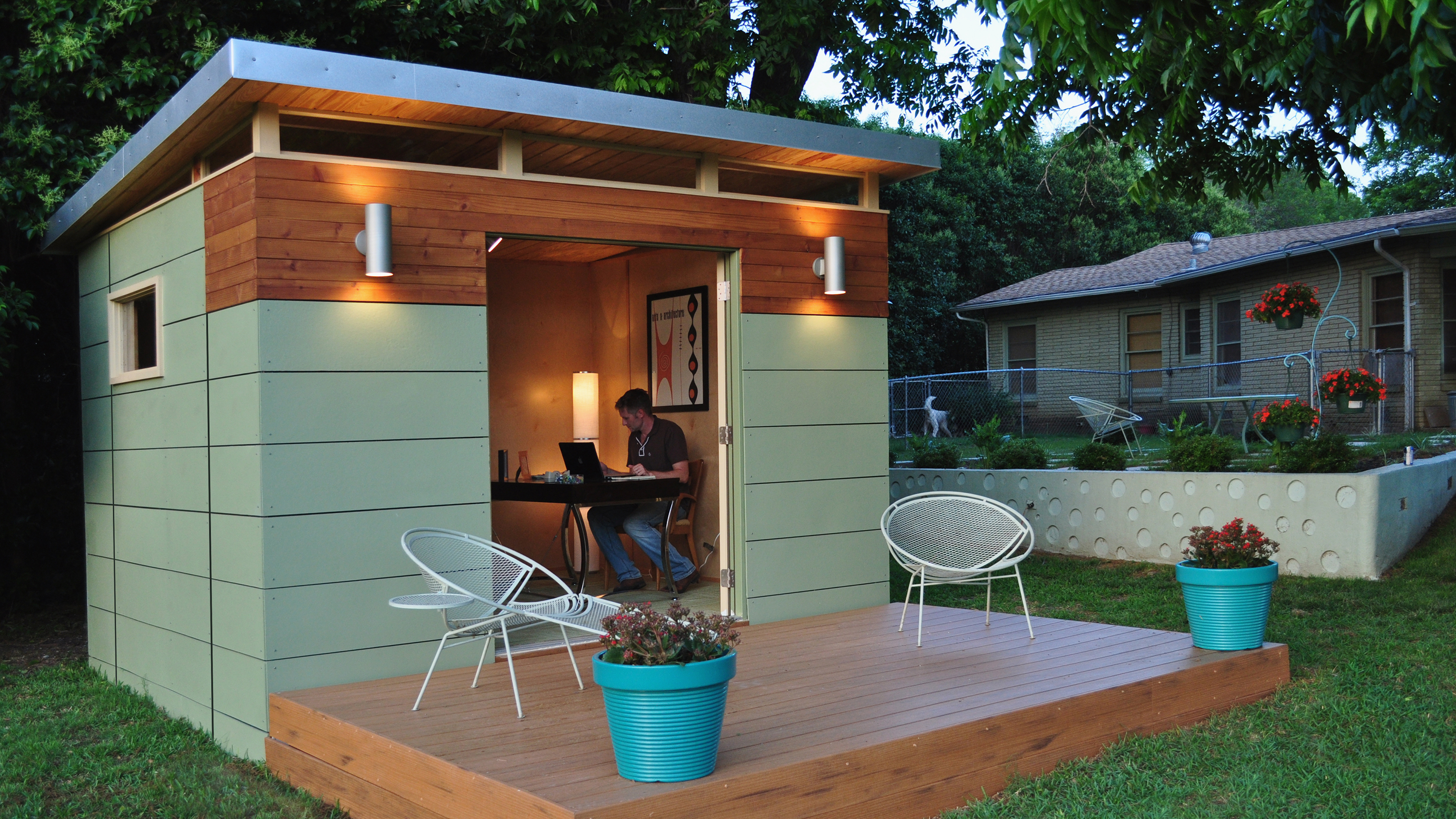
Working Remotely? Create a Secluded Office Area
COVID-19 has made working and schooling at home the new normal. But if you don’t have a designated workspace—or the kids are demanding your attention—working at home sounds more like living at work. You can change that up this winter with a shed in your backyard that you can use as a workspace or an entertainment space—or a yoga or art studio.
One popular choice is a prefabricated structure that is shipped to you for assembly—for example, Kanga Room Systems' Kwik Room kits. You can choose between a modern or cottage-style design with sizes ranging from 80 square feet to 196 square feet, with each kit containing precut walls, a roof with insulation and at least one window. Before ordering, Kanga suggests you have a foundation or deck material set for your room. A shell kit for an 80-square-foot modern Kwik Room starts at $7,200. Other companies that specialize in prefab rooms include Modern Shed and Studio Shed. Both firms allow you to design the shed of your choosing that you can either assemble yourself or have one of their contractors build.
The Outdoor Living Today 12-by-8-foot cedar shed kit has a starting price of $3,097. Wayfair.com also has a wide variety of sheds. For example, you can order an 11-by-7.5-foot plastic shed with two windows for $1,750.
You’ll pay extra for a foundation, utility connections and local permits, not to mention wiring your remote room for electricity for lights and a portable heater. “For a shed with a few outlets, 30 amps may be adequate. But, depending on the use, up to 100 amps may be needed,” says accessory dwelling unit expert Kol Peterson, author of Backdoor Revolution: The Definitive Guide to ADU Development. (You can hire a contractor to build the shed and wire it for electricity.) As for plumbing, Peterson says, the easiest way to keep costs down is to forget about it.
Get Kiplinger Today newsletter — free
Profit and prosper with the best of Kiplinger's advice on investing, taxes, retirement, personal finance and much more. Delivered daily. Enter your email in the box and click Sign Me Up.

Rivan joined Kiplinger on Leap Day 2016 as a reporter for Kiplinger's Personal Finance magazine. A Michigan native, she graduated from the University of Michigan in 2014 and from there freelanced as a local copy editor and proofreader, and served as a research assistant to a local Detroit journalist. Her work has been featured in the Ann Arbor Observer and Sage Business Researcher. She is currently assistant editor, personal finance at The Washington Post.


